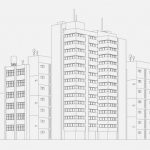A Quality Assurance scheme is a management system is a management system, which increases confidence that a material, product or service will conform to specified requirements. It outlines the commitments, policies, designated responsibilities and requirements of the owner.
QA scheme of one type or another is used. Depending on the value of the product and methods used in its manufacture, such schemes may themselves become extremely complex and involve individuals, who have little empathy for a particular material or process, even as being very competent in their understanding of others.
The assumptions made during the planning and the design, adequate QA measures shall be taken. The construction should results in satisfactory strength, serviceability and long term durability so as lower the overall life cycle cost.
QA in construction activity results to proper design, use of adequate materials and components to be supplied by the producers, proper workmanship in the execution of works by the contractor and ultimately, proper care during the use of structure, including timely maintenance and repair by the owner.
QA assure are both organizational and technical. Some common cases should be specified in a general QA plan, which shall identify the key elements, necessary to provide fitness of the structure, and the means by which they are to be provided, and the overall purpose to provide confidence that the realized project will work satisfactory in service, fulfilling intended needs.
The job of QA and QC would involve both the inputs as well as the outputs. Inputs are in the form of materials for concrete; workmanship in all stages of batching, mixing, transportation placing, compaction and curing; and the related plant, machinery and equipments; resulting in the output in the form of concrete in place.
QA plan shall define the tasks and responsibilities of all persons involved, adequate control and checking procedures and the organization and maintaining adequate documentation of the building process and its results, such documentation should generally include:
· Test reports and manufacturer’s certificate for materials, concrete mix design
· Pour cards for site organization and clearance for concrete placement
· Record of site inspection of workmanship, field tests
· Non-conformance reports, change orders
· Quality control charts
· Statistical analysis
Need for quality Assurance
The quality necessary to give good performance and appearance throughout its intended life is attained.
· The client requires it in promoting his next engineering scheme
· The designer depends on it, for his reputation and professional satisfaction
· The materials producer is influenced by the quantity of work in his future sales.
· The building contractor also relies on it, to promote his organization in procuring future contracts, but his task is often complicated by the problems of time scheduling and costs
Most faults in structures are attributable to deign errors, and poor workmanship on site with only 10% being due to inadequate materials.
Causes of design faults may include:
· Mis-interpretation of the client’s needs
· Lack of good communication between members of the design team
· Misinterpretation of design standards or codes of practice
· Use of incorrect or out-of-date data
· Production of and reference to inadequate and imprecise specifications
Causes of faults in construction may include:
· Misinterpretation of design drawings or specifications
· Lack of effective communication with suppliers and sub contractors
· Inefficient co-ordination of sub-contracted work
· Inadequate on-site supervision
· Poor workmanship due to inadequate skills and experience of the labour force satisfactory instructions


Comments are closed